Need a VMware Horizon alternative that brings scalable, cost-effective Linux VDI to your team? When organizations jumped into desktop virtualization in 2020, VMware Horizon quickly became a popular solution. Now, as Omnissa Horizon since 2024, it’s still valued for its solid Windows virtualization, but it falls short for the 47% of IT professionals using Linux-based systems.
Omnissa’s narrow focus on Linux, along with growing licensing costs and system load, is driving teams to look for Linux-native VDI tools that are faster, easier to use, and more budget-friendly. Among the options, ThinLinc stands out for its affordability, strong security, and easy scalability.
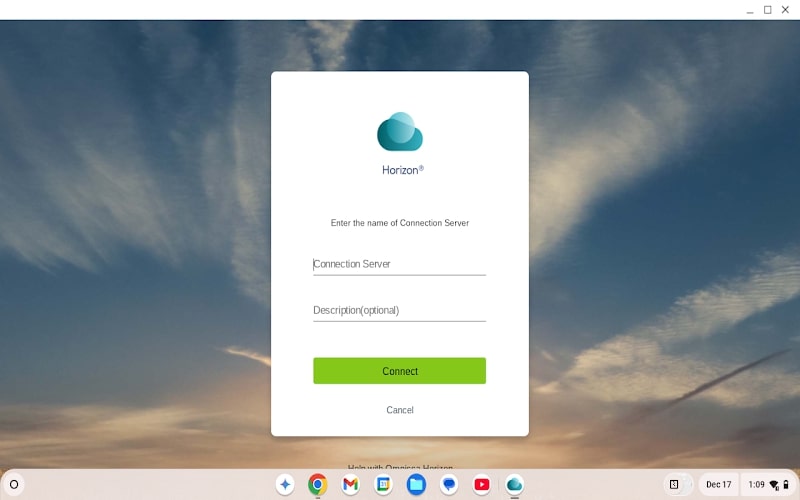
Image Source: Chrome Web Store
Image Source: Chrome Web Store
Cost is a key factor in VDI deployment, yet 31% of organizations report sinking massive budgets into operationalization and maintenance. Omnissa, with its expensive licensing tiers and extra fees for additional components like Unified Access Gateway, is part of the problem.
Last year, it removed perpetual licenses and moved to a subscription-only model with two license types: SaaS (cloud) and Term (on-premises). You can choose between a per named user or concurrent connection model. Pricing varies by edition, though, from $4.67 per user monthly for Horizon Standard to $12.50 Horizon Universal.

Image source: TrustRadius
While they’ve bundled VMware Vsphere Foundation (VVF) for VDI in all editions, Horizon SaaS licenses (e.g., Horizon Universal, Standard Plus, and Enterprise Plus) require purchasing a core SKU starting at 50 seats. If you need more, you'd have to stack 10-seat add-ons, pushing costs higher as you scale. This makes budgeting and scaling complex.
As an added drawback, unlike ThinLinc, VMware Horizon doesn’t have a free tier to allow teams to experiment with the system before committing to a full deployment.
Omnissa Horizon is deeply integrated with Microsoft technologies like Windows Server and Microsoft Azure. Its design and updates clearly prioritize those environments, so while Windows VDI runs smoothly, Linux teams face compatibility problems.
VMware Horizon customers typically complain about:
An Omnissa Community member wrote on the Omnissa forum: “I’ve been asked by my organization to update my VMware Horizon Client to version 2306 or later, or I will soon become unable to connect; I am currently using Horizon Client version 2212.1 on Linux/Ubuntu 22.04.4 LTS (64-bit). However, when I upgrade and try to connect with this new version, the application crashes with an ILLEGAL INSTRUCTION exception. This does not happen using the Windows version of Horizon Client 2306 on the same machine, however!”
Setting VMware Horizon for Linux desktops up involves dealing with multiple components, alongside dedicated hardware for on-premises deployments that pile onto the workload. Getting it all running requires serious VMware training, and it's a steep learning curve. In fact, many users feel that trying to find answers in their documentation is frustrating.

Image source: TrustRadius
Omnissa Horizon requires VMware vSphere and vSAN for its infrastructure, limiting flexibility for businesses that want to adopt alternative hypervisors or VDI solutions. Its integration with public clouds like Microsoft Azure and AWS WorkSpaces Core is also tied to hosted vSphere solutions, which can be expensive and geographically restrictive.
Horizon's Windows-centric design can hinder Linux performance, causing slowdowns with graphics-heavy apps and high-CPU processes. VMware Horizon’s desktop delivery pipeline, including the Blast Extreme protocol, also adds some overhead. This framework is primarily optimized for Windows environments, which limits the efficiency of features like multi-monitor setups or real-time audio.
The key to finding a good VMware alternative is choosing a lightweight tool that balances performance with practicality to boost productivity without unnecessary costs or complexity.
Here are the features you need:
ThinLinc goes beyond standard Linux remote desktop solutions like X2Go, TigerVNC, and noVNC. Unlike Omnissa Horizon's Windows-centric approach, it's developed specifically for Linux, delivering fast, reliable desktop virtualization across all modern distributions like Red Hat, CentOS and Ubuntu.
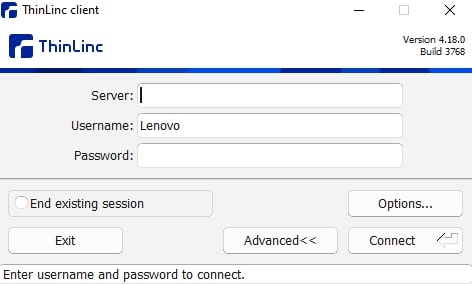
Image source: ThinLinc Client
We’ve built a strong foundation over 20 years, earning the trust of universities, research labs, and enterprises worldwide through consistent performance and reliability.
What sets ThinLinc apart as the best VMware Horizon alternative is how it tackles each of the tool’s major issues:
ThinLinc is an all-in-one solution that simplifies deployment processes, easing administrative tasks. In contrast to Omnissa Horizon, it begins with a minimal configuration for an improved user experience.
It also features flexible access options, such as dedicated clients for Windows, macOS, and Linux, and instant browser access. Sysadmins can easily handle users and monitor systems with an intuitive web-based management dashboard and command-line tools.
ThinLinc is built to keep your team productive no matter the network conditions. Remote work sessions run fast and smooth, with low latency and the flexibility to resume exactly where you left off without losing progress, even days later.
It's also ideal for enterprise-scale deployments. With multi-user support, it scales smoothly to thousands of users across diverse setups.
ThinLinc comes with enterprise-grade SSH encryption, strong controls, and multi-factor authentication (LDAP, Active Directory, SSO) for secure remote access. Admins also have the flexibility to set up custom security policies to fit their specific needs.
As of April 2025, ThinLinc simplifies VMware Horizon complex licensing with its concurrent user model, and offers lower costs through a transparent pricing structure. There is also a free, fully featured version for up to 10 concurrent connections.
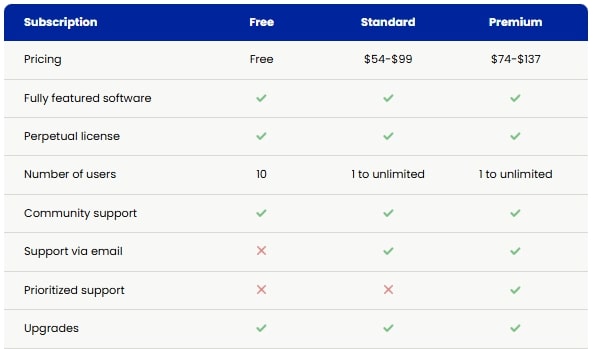
Image source: ThinLinc Client
Try ThinLinc free today and see how it improves Linux remote access.
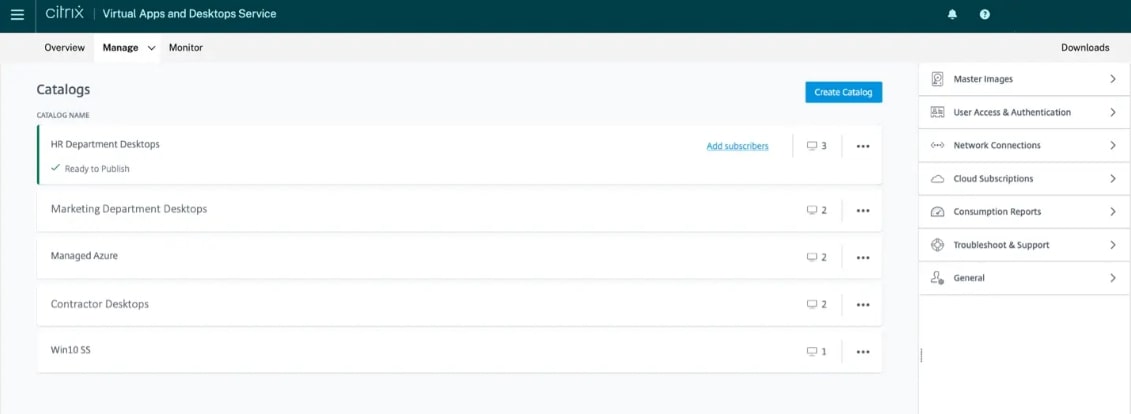
Image source: G2
Citrix Virtual Apps & Desktops is a long-established end-user computing solution. It provides a great user experience for hybrid Windows/Linux application virtualization but uses many server resources and needs a reliable network to run efficiently.
Its Linux VDI support, while present, feels secondary, with users reporting graphics and distribution compatibility issues that can negatively impact performance. Compared to ThinLinc, Citrix also requires more configuration and management expertise.
Add to that Citrix's complex licensing model, similar to VMware Horizon. It charges per named user, with a pricing structure that can be expensive and somewhat unclear. Hidden fees often emerge when deploying add-ons such as Citrix Gateway or Provisioning Services.
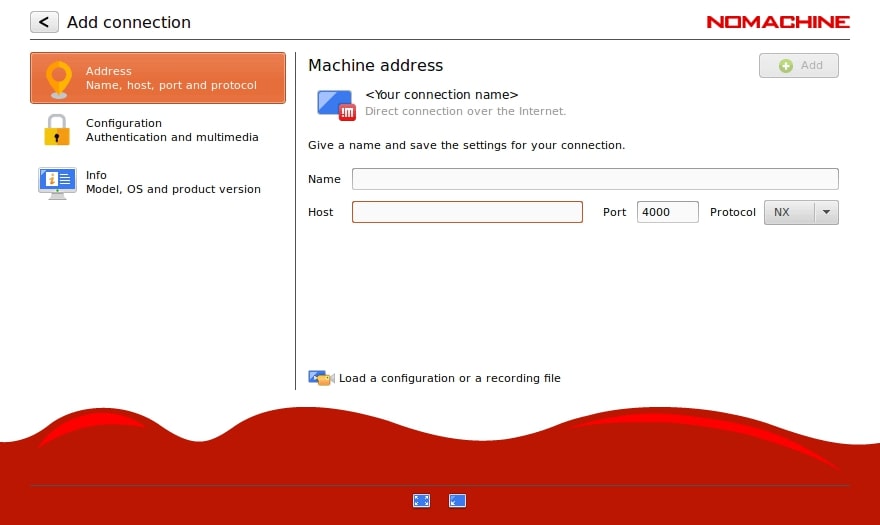
Image source: Tecmint
NoMachine NX is another Omnissa competitor, especially for individual users or small teams prioritizing cross-platform compatibility. It supports multi-user connections but requires more manual configuration for clustering and load balancing than ThinLinc, so scaling to large enterprise levels can be challenging.
Its node-based licensing makes things more complicated. Costs are tied to server instances instead of predictable user connections. It has a free version, but don’t expect enterprise-grade security or advanced management features.
If you're interested in exploring more NoMachine alternatives, take a look at our article.
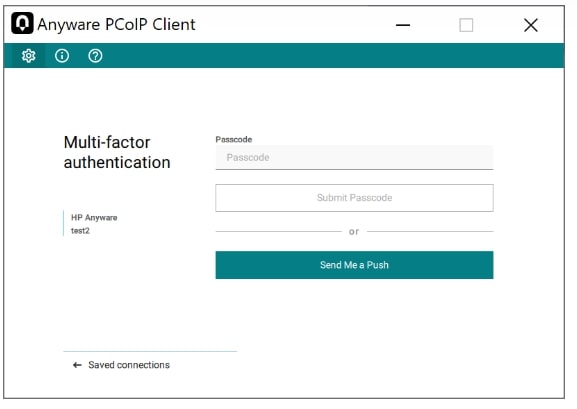
Image source: Rublon
HP Anyware relies on the PCoIP protocol to provide high-performance virtual desktops across different infrastructures. Security is a strong point, offering Zero Trust endpoint management for sensitive data and applications.
However, it comes with a significant cost, particularly for large-scale enterprise deployments. Licensing fees and Anyware Manager subscriptions can quickly accumulate.
It outperforms VMware Horizon for graphics-heavy tasks like CAD, but its setup is more complex compared to ThinLinc’s simpler approach. You need to get specialized hardware to maximize performance, such as PCoIP Zero Clients and Remote Workstation Cards, which increases costs and adds to management complexity.
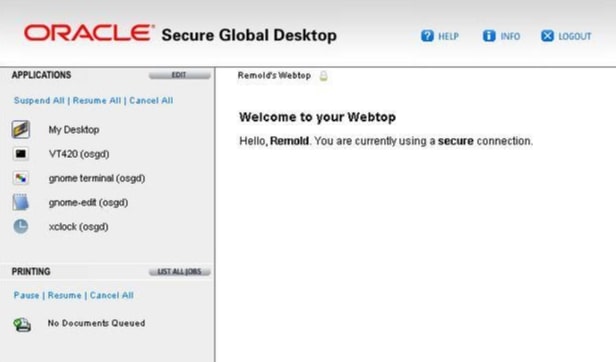
Image source: Software Informer
Oracle Secure Global Desktop is another solid VMware Horizon alternative for secure remote access in enterprise settings, though it’s being discontinued. It delivers virtual desktops through a gateway model that supports virtual desktops across Windows, Linux, and Solaris platforms. But it’s not built for Linux-first environments.
It leans on Oracle’s managed services framework but lacks extensive community support, which means you're on your own when it comes to troubleshooting. The high cost of licensing and deployment further restricts accessibility for smaller businesses or those looking for cost-effective solutions.
ThinLinc seamlessly integrates into Linux setups, avoiding the multiple consoles and high fees that bother Omnissa Horizon users. Its design delivers cost-effective, high-performance VDI for Linux-centric organizations.
Check the table below to see how ThinLinc stacks up against Omnissa Horizon:
| Feature | ThinLinc | Omnissa Horizon |
| Linux-first design | ✅ Yes | ❌ No (Windows-focused) |
| Performance | ✅ Optimized for low-latency VDI | ❌ Windows-first, Linux less efficient |
| Scalability | ✅ Supports thousands of concurrent users | ❌ Heavy infrastructure, harder to scale |
| Security | ✅ SSH-based encryption, LDAP authentication | ✅ Strong security but more complex |
| Ease of deployment | ✅ Simple setup, minimal configuration | ❌ Requires extensive setup |
| Cost-effectiveness | ✅ Concurrent sessions, lower cost | ❌ Expensive, complex licensing model |
Most teams can migrate from Omnissa Horizon to ThinLinc in just a few hours. Here’s an overview of how to get started:
ThinLinc's intuitive deployment process simplifies the complexity often associated with Omnissa Horizon. Its strong SSH encryption and customizable security settings provide secure remote access, adapting to your organization’s risks without unnecessary resource use.
If you're working in a Linux setup, ThinLinc gives you fast performance, easy scaling, and saves money. Whether you run a big company, a university, or a research center, it's a simple way to get reliable and efficient remote desktop access that fits the way Linux teams work today.
Switch to a Linux-first VDI solution for simplified management and scalable growth—try ThinLinc for free today.